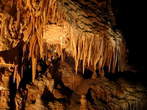Vrsar is a well-known tourist village, which is only about ten kilometers from Porec. The inhabitants are mostly winegrowers and fishermen. In front of the coast there is a series of beautiful green islets that protect the village from the effects of the weather.
The Istrian peninsula was already inhabited in prehistoric times. The first known inhabitants were Histri and Liburni. Vrsar has a rich historical past, which is reflected at every step. Emperor Otto III. donated the city to the Porec bishops in 983. They were the owners of the land until 1778. The authorities fortified the settlement with a castle and surrounded it with walls and towers, only one of which has been preserved in its original form. The biggest cultural and historical sights of Vrsar are the parish church of St. Martina, the castle that was the summer residence of the Porec bishops, the church of St. Foske from the 17th century, the main city gate, narrow streets and small intimate squares, old Romanesque gates and the church of St. Anton. In the port area are located the church of St. George, the Roman magazine and necropolis, the early Christian basilica, the Romanesque basilica of St. Mary of the Sea, remains of defensive walls and towers, and abandoned quarries. The harbor developed in the 19th century, when a large house was also built between the old town center and the coast.
Life in this area has been going on since ancient times to the present day. In some medieval documents, Vrsar is mentioned under the name Fabian. Between the 12th and 17th centuries, there were salt pans with salt storage in the bay, which belonged to the Diocese of Porec.






